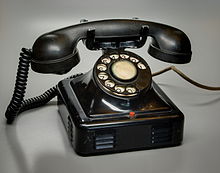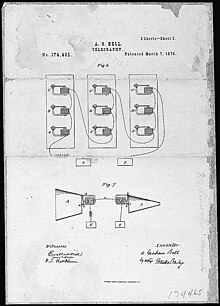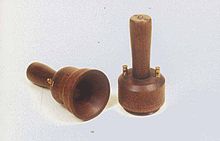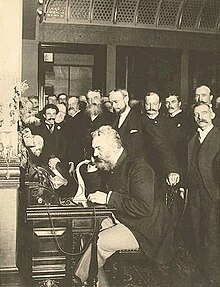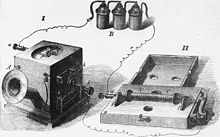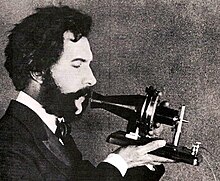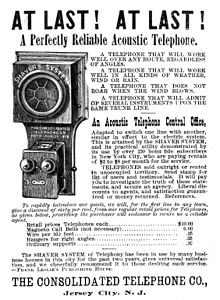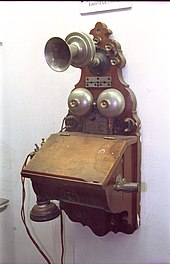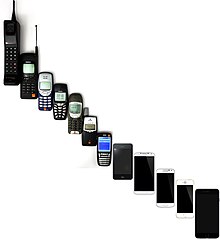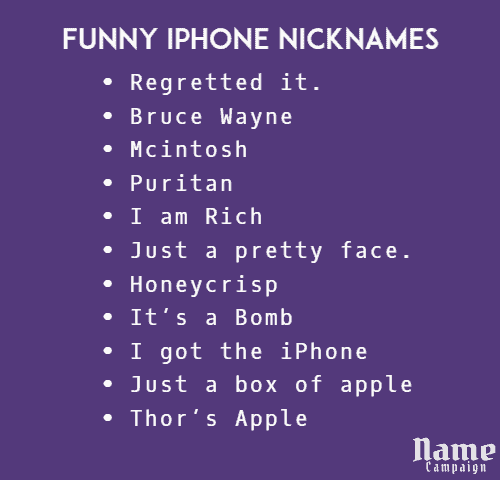What is a phone in phonetics?
In linguistics, a phone (from the Greek fōnḗ) is a distinct speech sound. We study phones in phonetics, the branch of linguistics that deals with the physical production and reception of sound. Phones are not specific to particular languages and aren’t always vital for understanding the meaning of a word. Phones are represented by letters and symbols from the International Phonetic Alphabet (IPA).
Let’s take a look at an example:
Look at the words spin and pat. They both contain the letter p; however, the speech sounds differ slightly. By looking at the phonetic transcription of the words, we can compare the two different phones.
[spɪn] and [pʰæt]
As you can see, the word spin contains 4 phones (s, p, ɪ, and n) and the word pat has 3 (pʰ, æ, and t). Notice how the first phone in the word pat is the symbol p accompanied by a small h — this is because the p is aspirated (pronounced with an exhalation of breath). Whether or not we pronounce the word pat with an exhalation of breath, the word’s meaning won’t change, and most people will understand what you’re saying. However, the phone [pʰ] shows us the actual sound made when [p] is used in this word.
You might be wondering what all these strange-looking letters within brackets are — this brings us to the symbols used to represent phones and the International Phonetic alphabet.
Symbols for phones
The International Phonetic Alphabet (IPA) is a system for representing phonetic sounds (phones) with symbols.
It was developed by the language teacher Paul Passy in 1888 and is a system of phonetic symbols based primarily on Latin script. The chart was initially created as a way of accurately representing speech sounds and is now used by linguists and language educators around the world.
The IPA aims to represent all qualities of speech and sounds present in language, including vowels, consonants, prosodic features (pitch, intonation, and tone), gaps between sounds, and syllables.
The IPA currently comprises:
-
Pulmonic consonants — Sounds made by air pressure from the lungs. All consonants within the English language are pulmonic.
-
Non-pulmonic consonants — Sounds that are not produced with air pressure from the lungs. There are no non-pulmonic consonants in English.
-
Monophtongs— Single vowel sounds in a syllable.
-
Diphthongs — Two vowel sounds in a syllable.
-
Suprasegmentals — A group of symbols that represents the prosodic features of speech.
-
Tones and word accents — Used when transcribing tonal languages, such as Vietnamese.
-
Diacritics — Small marks that show slight distinctions in pronunciation.
Diacritics are small marks placed above, below, or next to the letter-like symbols to show slight distinctions in sounds and pronunciation. There are 44 different diacritics in the IPA. Some common ones include:
- ◌̥ Voiceless
- ◌̬ Voiced
- ʰ Aspirated
- ◌̃ Nasalised
The IPA chart

It is important to note that the IPA is not specific to any particular language and can be used globally to help language learners.
How do you transcribe phone pronunciations?
When we describe phones, we use narrow transcription (including as many aspects of a specific pronunciation as possible) and place the letters and symbols between two square brackets ( [ ] ). Phonetic transcriptions give us lots of information about how to physically produce sounds.
The phonetic transcription of the word scissors is [ˈsɪzəz].
The diacritic [ ‘ ] over the s shows that it is a syllabic consonant sound — meaning it’s a sound that creates a syllable on its own.
Phones vs. Phonemes
We’ve already said that phones are distinct speech sounds, so what exactly are phonemes?
A phoneme is the smallest unit of meaningful sound in a specific language. In the English language, there are 44 different phonemes (20 distinct vowel sounds and 24 consonant sounds).
If you have seen transcriptions for English pronunciation before, you have likely seen phonemic transcriptions. Let’s take a look at an example:
The phonemic transcription of the word book is /bʊk/. As you can see, the word book has three distinct phonemes (b, ʊ, and k).
Whereas phones are not necessarily critical to understanding the meaning of words, phonemes are! If one phoneme is exchanged for another, it could change the word’s meaning completely. Take the words sheep and sheet, for example. The ending phonemes are different (/p/ and /t/), resulting in two completely different words!
You can tell whether transcription is phonetic or phonemic by looking at the brackets it’s encased in. Phonetic transcriptions go within square brackets ( [ ] ) and phonemic transcriptions go within slashes ( / / ).
What are allophones?
An allophone is a term used to describe the group of phones represented by a single phoneme in a particular language.
For example, In English, the phones [tʰ] (aspirated), [t] (unaspirated), and [tʃ] (affricated) are all represented by the single phoneme /t/ — this makes them all allophones for the phoneme /t/.
Look at the following words: Trick, Tack, Stack. Each word contains one of the previous allophones for phoneme /t/. Can you figure out which word has which allophone?
Answers:
-
Trick = [tʃ] (africated — T makes a ‘CH’ sound)
-
Tack = [tʰ] (aspirated — an exhalation of air after the T)
-
Stack = [t] (unaspirated)
When we transcribe phones, we use narrow transcription — meaning we include as much detail about the pronunciation as possible with the help of diacritics. In contrast, phonemic transcription is much broader and only contains the phonemes.
Phone — Key takeaways
- A phone is any distinct speech sound and is not specific to any particular language.
- We study phones in phonetics, the branch of linguistics that deals with the physical production and reception of sound.
- Phones are represented by letters and symbols from the International Phonetic Alphabet (IPA). When creating phonetic transcriptions, we include as much detail about the pronunciation as possible and place the transcription between two square brackets. For example, the phonetic transcription of IPA is [aɪ pʰiː eɪ].
- Changes in pronunciation, such as aspirated or unaspirated (with an exhalation of air or without), are represented by small marks called diacritics.
- Phones are different from phonemes in that they are not language-specific and do not play an essential role in the meaning of words.
References
- Fig. 1. International Phonetic Association, CC BY-SA 3.0 , via Wikimedia Commons
A telephone is a telecommunications device that permits two or more users to conduct a conversation when they are too far apart to be easily heard directly. A telephone converts sound, typically and most efficiently the human voice, into electronic signals that are transmitted via cables and other communication channels to another telephone which reproduces the sound to the receiving user. The term is derived from Greek: τῆλε (tēle, far) and φωνή (phōnē, voice), together meaning distant voice. A common short form of the term is phone, which came into use early in the telephone’s history.[1]
In 1876, Alexander Graham Bell was the first to be granted a United States patent for a device that produced clearly intelligible replication of the human voice at a second device.[2] This instrument was further developed by many others, and became rapidly indispensable in business, government, and in households.
The essential elements of a telephone are a microphone (transmitter) to speak into and an earphone (receiver) which reproduces the voice at a distant location.[3] The receiver and transmitter are usually built into a handset which is held up to the ear and mouth during conversation. The transmitter converts the sound waves to electrical signals which are sent through the telecommunication system to the receiving telephone, which converts the signals into audible sound in the receiver or sometimes a loudspeaker. Telephones permit transmission in both directions simultaneously.
Most telephones also contain an alerting feature, such as a ringer or a visual indicator, to announce an incoming telephone call. Telephone calls are initiated most commonly with a keypad or dial, affixed to the telephone, to enter a telephone number, which is the address of the call recipient’s telephone in the telecommunication system, but other methods existed in the early history of the telephone.
The first telephones were directly connected to each other from one customer’s office or residence to another customer’s location. Being impractical beyond just a few customers, these systems were quickly replaced by manually operated centrally located switchboards. These exchanges were soon connected together, eventually forming an automated, worldwide public switched telephone network. For greater mobility, various radio systems were developed for transmission between mobile stations on ships and automobiles in the mid-20th century. Hand-held mobile phones were introduced for personal service starting in 1973. In later decades, their analog cellular system evolved into digital networks with greater capability and lower cost.
Convergence in communication services has provided a broad spectrum of capabilities in cell phones, including mobile computing, giving rise to the smartphone, the dominant type of telephone in the world today.
Early history
Alexander Graham Bell’s Telephone Patent Drawing
Replica of the telettrofono, invented by Antonio Meucci and credited by several sources as the first telephone[4]
Bell placing the first New York to Chicago telephone call in 1892
Before the development of the electric telephone, the term telephone was applied to other inventions, and not all early researchers of the electrical device used the term. Perhaps the earliest use of the word for a communications system was the telephon created by Johann Sigismund Gottfried Huth [de] in 1796. Huth proposed an alternative to the optical telegraph of Claude Chappe in which the operators in the signaling towers would shout to each other by means of what he called «speaking tubes», but would now be called giant megaphones.[5] A communication device for sailing vessels, called telephone, was invented by Captain John Taylor in 1844. This instrument used four air horns to communicate with vessels in foggy weather.[6][7]
Johann Philipp Reis used the term in reference to his invention, commonly known as the Reis telephone, in c. 1860. His device appears to be the first device based on the conversion of sound into electrical impulses.
The term telephone was adopted into the vocabulary of many languages. It is derived from the Greek: τῆλε, tēle, «far» and φωνή, phōnē, «voice», together meaning «distant voice».
Credit for the invention of the electric telephone is frequently disputed. As with other influential inventions such as radio, television, the light bulb, and the computer, several inventors pioneered experimental work on voice transmission over a wire and improved on each other’s ideas. New controversies over the issue still arise from time to time. Charles Bourseul, Antonio Meucci, Johann Philipp Reis, Alexander Graham Bell, and Elisha Gray, amongst others, have all been credited with the invention of the telephone.[8][9]
Alexander Graham Bell was the first to be awarded a patent for the electric telephone by the United States Patent and Trademark Office (USPTO) in March 1876.[10] Before Bell’s patent, the telephone transmitted sound in a way that was similar to the telegraph. This method used vibrations and circuits to send electrical pulses, but was missing key features. Bell found that this method produced a sound through intermittent currents, but in order for the telephone to work a fluctuating current reproduced sounds the best. The fluctuating currents became the basis for the working telephone, creating Bell’s patent.[11] That first patent by Bell was the master patent of the telephone, from which other patents for electric telephone devices and features flowed.[12]
In 1876, shortly after Bell’s patent application, Hungarian engineer Tivadar Puskás proposed the telephone switch, which allowed for the formation of telephone exchanges, and eventually networks.[13]
In the United Kingdom, the blower is used as a slang term for a telephone. The term came from navy slang for a speaking tube.[14] In the U.S., a somewhat dated slang term refers to the telephone as «the horn,» as in «I couldn’t get him on the horn,» or «I’ll be off the horn in a moment.»[15]
Timeline of early development
Bell’s first telephone transmitter, ca. 1876, reenacted 50 years later
Acoustic telephone ad, The Consolidated Telephone Co., Jersey City, New Jersey, 1886
1896 telephone from Sweden
Wooden wall telephone with a hand-cranked magneto generator
- 1844: Innocenzo Manzetti first mooted the idea of a «speaking telegraph» or telephone. Use of the «speaking telegraph» and «sound telegraph» monikers would eventually be replaced by the newer, distinct name, «telephone».
- 26 August 1854: Charles Bourseul published an article in the magazine L’Illustration (Paris): «Transmission électrique de la parole» (electric transmission of speech), describing a «make-and-break» type telephone transmitter later created by Johann Reis.
- 26 October 1861: Johann Philipp Reis (1834–1874) publicly demonstrated the Reis telephone before the Physical Society of Frankfurt.[9] Reis’s telephone was not limited to musical sounds. Reis also used his telephone to transmit the phrase «Das Pferd frisst keinen Gurkensalat» («The horse does not eat cucumber salad»).
- 22 August 1865, La Feuille d’Aoste reported «It is rumored that English technicians to whom Manzetti illustrated his method for transmitting spoken words on the telegraph wire intend to apply said invention in England on several private telegraph lines».[citation needed] However, telephones would not be demonstrated there until 1876, with a set of telephones from Bell.
- 28 December 1871: Antonio Meucci files patent caveat No. 3335 in the U.S. Patent Office, titled «Sound Telegraph», describing communication of voice between two people by wire. A patent caveat was not an invention patent award, but only an unverified notice filed by an individual that he or she intends to file a patent application in the future.
- 1874: Meucci, after having renewed the caveat for two years does not renew it again, and the caveat lapses.
- 6 April 1875: Bell’s U.S. Patent 161,739 «Transmitters and Receivers for Electric Telegraphs» is granted. This uses multiple vibrating steel reeds in make-break circuits.
- 11 February 1876: Elisha Gray invents a liquid transmitter for use with the telephone but does not build one.
- 14 February 1876: Gray files a patent caveat for transmitting the human voice through a telegraphic circuit.
- 14 February 1876: Alexander Graham Bell applies for the patent «Improvements in Telegraphy», for electromagnetic telephones using what is now called amplitude modulation (oscillating current and voltage) but which he referred to as «undulating current».
- 19 February 1876: Gray is notified by the U.S. Patent Office of an interference between his caveat and Bell’s patent application. Gray decides to abandon his caveat.
- 7 March 1876: Bell’s U.S. patent 174,465 «Improvement in Telegraphy» is granted, covering «the method of, and apparatus for, transmitting vocal or other sounds telegraphically…by causing electrical undulations, similar in form to the vibrations of the air accompanying the said vocal or other sound.»
- 10 March 1876: The first successful telephone transmission of clear speech using a liquid transmitter when Bell spoke into his device, «Mr. Watson, come here, I want to see you.» and Watson heard each word distinctly.
- 30 January 1877: Bell’s U.S. patent 186,787 is granted for an electromagnetic telephone using permanent magnets, iron diaphragms, and a call bell.
- 27 April 1877: Thomas Edison files a patent application for a carbon (graphite) transmitter. It was published as No. 474,230 on 3 May 1892, after a 15-year delay because of litigation. Edison was granted patent 222,390 for a carbon granules transmitter in 1879.
Early commercial instruments
Early telephones were technically diverse. Some used a water microphone, some had a metal diaphragm that induced current in an electromagnet wound around a permanent magnet, and some were dynamic – their diaphragm vibrated a coil of wire in the field of a permanent magnet or the coil vibrated the diaphragm. The sound-powered dynamic variants survived in small numbers through the 20th century in military and maritime applications, where its ability to create its own electrical power was crucial. Most, however, used the Edison/Berliner carbon transmitter, which was much louder than the other kinds, even though it required an induction coil which was an impedance matching transformer to make it compatible with the impedance of the line. The Edison patents kept the Bell monopoly viable into the 20th century, by which time the network was more important than the instrument.
Early telephones were locally powered, using either a dynamic transmitter or by the powering of a transmitter with a local battery. One of the jobs of outside plant personnel was to visit each telephone periodically to inspect the battery. During the 20th century, telephones powered from the telephone exchange over the same wires that carried the voice signals became common.
Early telephones used a single wire for the subscriber’s line, with ground return used to complete the circuit (as used in telegraphs). The earliest dynamic telephones also had only one port opening for sound, with the user alternately listening and speaking (or rather, shouting) into the same hole. Sometimes the instruments were operated in pairs at each end, making conversation more convenient but also more expensive.
At first, the benefits of a telephone exchange were not exploited. Instead, telephones were leased in pairs to a subscriber, who had to arrange for a telegraph contractor to construct a line between them, for example, between a home and a shop. Users who wanted the ability to speak to several different locations would need to obtain and set up three or four pairs of telephones. Western Union, already using telegraph exchanges, quickly extended the principle to its telephones in New York City and San Francisco, and Bell was not slow in appreciating the potential.
Signalling began in an appropriately primitive manner. The user alerted the other end, or the exchange operator, by whistling into the transmitter. Exchange operation soon resulted in telephones being equipped with a bell in a ringer box, first operated over a second wire, and later over the same wire, but with a condenser (capacitor) in series with the bell coil to allow the AC ringer signal through while still blocking DC (keeping the phone «on hook»). Telephones connected to the earliest Strowger switch automatic exchanges had seven wires, one for the knife switch, one for each telegraph key, one for the bell, one for the push-button and two for speaking. Large wall telephones in the early 20th century usually incorporated the bell, and separate bell boxes for desk phones dwindled away in the middle of the century.
Rural and other telephones that were not on a common battery exchange had a magneto hand-cranked generator to produce a high voltage alternating signal to ring the bells of other telephones on the line and to alert the operator. Some local farming communities that were not connected to the main networks set up barbed wire telephone lines that exploited the existing system of field fences to transmit the signal.
In the 1890s a new smaller style of telephone was introduced, packaged in three parts. The transmitter stood on a stand, known as a «candlestick» for its shape. When not in use, the receiver hung on a hook with a switch in it, known as a «switchhook». Previous telephones required the user to operate a separate switch to connect either the voice or the bell. With the new kind, the user was less likely to leave the phone «off the hook». In phones connected to magneto exchanges, the bell, induction coil, battery and magneto were in a separate bell box or «ringer box».[16] In phones connected to common battery exchanges, the ringer box was installed under a desk, or other out-of-the-way place, since it did not need a battery or magneto.
Cradle designs were also used at this time, having a handle with the receiver and transmitter attached, now called a handset, separate from the cradle base that housed the magneto crank and other parts. They were larger than the «candlestick» and more popular.
Disadvantages of single-wire operation such as crosstalk and hum from nearby AC power wires had already led to the use of twisted pairs and, for long-distance telephones, four-wire circuits. Users at the beginning of the 20th century did not place long-distance calls from their own telephones but made an appointment and were connected with the assistance of a telephone operator.[17]
What turned out to be the most popular and longest-lasting physical style of telephone was introduced in the early 20th century, including Bell’s 202-type desk set. A carbon granule transmitter and electromagnetic receiver were united in a single molded plastic handle, which when not in use was secured in a cradle in the base unit. The circuit diagram of the model 202 shows the direct connection of the transmitter to the line, while the receiver was inductively coupled. In local battery configurations, when the local loop was too long to provide sufficient current from the exchange, the transmitter was powered by a local battery and inductively coupled, while the receiver was included in the local loop.[18] The coupling transformer and the ringer were mounted in a separate enclosure, called the subscriber set. The dial switch in the base interrupted the line current by repeatedly but very briefly disconnecting the line one to ten times for each digit, and the hook switch (in the center of the circuit diagram) disconnected the line and the transmitter battery while the handset was on the cradle.
In the 1930s, telephone sets were developed that combined the bell and induction coil with the desk set, obviating a separate ringer box. The rotary dial becoming commonplace in the 1930s in many areas enabled customer-dialed service, but some magneto systems remained even into the 1960s. After World War II, the telephone networks saw rapid expansion and more efficient telephone sets, such as the model 500 telephone in the United States, were developed that permitted larger local networks centered around central offices. A breakthrough new technology was the introduction of Touch-Tone signaling using push-button telephones by American Telephone & Telegraph Company (AT&T) in 1963.[19]
-
Ericsson DBH 1001 (ca. 1931), the first combined telephone made with a Bakelite housing and handset
-
Video shows the operation of an Ericofon.
-
Digital telephones and voice over IP
An IP desktop telephone attached to a computer network
The invention of the transistor in 1947 dramatically changed the technology used in telephone systems and in the long-distance transmission networks, over the next several decades. With the development of stored program control and MOS integrated circuits for electronic switching systems, and new transmission technologies such as pulse-code modulation (PCM), telephony gradually evolved towards digital telephony, which improved the capacity, quality, and cost of the network.[20]
Integrated Services Digital Network (ISDN) was launched in the 1980’s, providing businesses and consumers with access to digital telephony services such as data, voice, video, and fax services.[21]
The development of digital data communications methods made it possible to digitize voice and transmit it as real-time data across computer networks and the Internet, giving rise to the field of Internet Protocol (IP) telephony, also known as voice over Internet Protocol (VoIP). VoIP has proven to be a disruptive technology that is rapidly replacing traditional telephone network infrastructure.[22]
Fixed telephone lines per 100 inhabitants 1997–2007
By January 2005, up to 10% of telephone subscribers in Japan and South Korea had switched to this digital telephone service. A January 2005 Newsweek article suggested that Internet telephony may be «the next big thing.»[23] The technology has spawned a new industry comprising many VoIP companies that offer services to consumers and businesses. The reported global VoIP market in October 2021 was $85.2 billion with a projection of $102.5 billion by 2026.[24]
IP telephony uses high-bandwidth Internet connections and specialized customer premises equipment to transmit telephone calls via the Internet, or any modern private data network. The customer equipment may be an analog telephone adapter (ATA) which translates the signals of a conventional analog telephone; an IP Phone, a dedicated standalone device; or a computer softphone application, utilizing the microphone and headset devices of a personal computer or smartphone.[25]
While traditional analog telephones are typically powered from the central office through the telephone line, digital telephones require a local power supply.[26] Internet-based digital service also requires special provisions to provide the service location to the emergency services when an emergency telephone number is called.[27]
Cordless telephones
A cordless telephone system consisting of a handset resting on a base station (left) and a second handset resting on a battery charger unit (right)
A cordless telephone or portable telephone consists of a base station unit and one or more portable cordless handsets. The base station connects to a telephone line, or provides service by voice over IP (VOIP). The handset communicates with the base station via radio frequency signals. A handset’s operational range is limited, usually to within the same building or within a short distance from the base station.
Base station
Base stations include a radio transceiver which enables full-duplex, outgoing and incoming signals and speech with the handsets. The base station often includes a microphone, audio amplifier, and a loudspeaker to enable hands-free speakerphone conversations, without needing to use a handset. The base station may also have a numeric keypad for dialing, and a display for caller ID. In addition, answering machine function may be built in.[28]
The cordless handset contains a rechargeable battery, which the base station recharges when the handset rests in its cradle. Muilt-handset systems generally also have additional charging stands. A cordless telephone typically requires a constant electricity supply to power the base station and charger units by means of a DC transformer which plugs into a wall AC power outlet.[28]
Mobile phones
A cellular mobile phone (cell phone). This model is a Motorola Slvr L71, released in 2006.
A mobile phone or cellphone or hand phone is a handheld telephone which connects via radio transmissions to a cellular telephone network. The cellular network consists of a network of ground based transmitter/receiver stations with antennas – which are usually located on towers or on buildings – and infrastructure connecting to land-based telephone lines.[29] Analog cellular networks first appeared in 1979, with the first digital cellular networks appearing in the early 1990s.[30]
Most mobile phones contain a SIM card to identify the phone to a network. This mini-SIM card has cutouts to convert the card to micro-SIM size
Mobile phones require a SIM card to be inserted into the phone. The SIM card is a small PVC card containing a small integrated circuit which stores the user’s international mobile subscriber identity (IMSI) number and its related key, which are used to identify and authenticate subscribers to the cellular network.
Mobile phones generally incorporate an LCD or OLED display, with some types, such as smartphones, having touch screens. Since the 1990s, mobile phones have gained other features which are not directly related to their primary function as telephones. These include text messaging, calendars, alarm clocks, personal schedulers, cameras, music players, games and later, internet access and smartphone functionality. Nearly all mobile phones have the ability to send text messages to other users via the SMS (Short Message Service) protocol. The multimedia messaging service (MMS) protocol enables users to send and receive multimedia content, such as photos, audio files and video files. As their functionality has increased over the years, many types of mobile phone, notably smartphones, require an operating system to run. Popular mobile phone operating systems in the past have included Symbian, Palm OS, BlackBerry OS and mobile phone versions of Windows. As of 2022, the most used operating systems are Google’s Android and Apple’s iOS.[31]
Before the era of smartphones, mobile phones were generally manufactured by companies specializing in telecommunications equipment, such as Nokia, Motorola, and Ericsson. Since the advent of smartphones, mobile phone manufacturers have also included consumer electronics companies, such as Apple, Samsung and Xiaomi.
Mobile phone usage
In 2002, only 10% of the world’s population used mobile phones and by 2005 that percentage had risen to 46%.[32] By the end of 2009, there were a total of nearly 6 billion mobile and fixed-line telephone subscribers worldwide. This included 1.26 billion fixed-line subscribers and 4.6 billion mobile subscribers.[33]
Smartphones
As of 2022, most mobile phones are smartphones, being a combination of a mobile phone and a personal computing device in the same unit. Most smartphones are primarily operated using a graphical user interface and a touch screen. Many phones have a secondary voice user interface, such as Siri on Apple iPhones, which can operate many of the device’s functions, as well as enabling users to use spoken commands to interact with the internet. Typically alphanumeric text input is accomplished via an on-screen virtual keyboard, although some smartphones have a small physical keyboard. Smartphones offer the ability to access internet data through the cellular network and via wi-fi, and usually allow direct connectivity to other devices via Bluetooth or a wired interface, such as USB or Lightning connectors. Smartphones, being able to run apps, have vastly expanded functionality compared to previous mobile phones. Having internet access and built in cameras, smartphones have made video calling readily accessible via IP connections. Smartphones also have access to a large number of web services and web apps, giving them functionality similar to traditional computers, although smartphones are often limited by their relatively small screen size and the size of their keyboards. Typically, smartphones feature such tools as cameras, media players, web browsers, email clients, interactive maps, satellite navigation and a variety of sensors, such as a compass, accelerometers and GPS receivers. In addition to voice calls, smartphone users commonly communicate using a wide variety of messaging formats, including SMS, MMS, email, and various proprietary messaging services, such as iMessage and various social media platforms.
Satellite phones
First generation late 1990s Iridium satellite phone
A satellite telephone, or satphone, is a type of mobile phone that connects to other phones or the telephone network by radio link through satellites orbiting the Earth instead of terrestrial cell sites, as cellphones do. Therefore, they can work in most geographic locations on the Earth’s surface, as long as open sky and the line-of-sight between the phone and the satellite is provided. Depending on the architecture of a particular system, coverage may include the entire Earth or only specific regions. Satellite phones provide similar functionality to terrestrial mobile telephones; voice calling, text messaging, and low-bandwidth Internet access are supported through most systems. The advantage of a satellite phone is that it can be used in such regions where local terrestrial communication infrastructures, such as landline and cellular networks, are not available.
Satellite phones are popular on expeditions into remote locations, hunting, fishing, maritime sector, humanitarian missions, business trips, and mining in hard-to-reach areas, where there is no reliable cellular service.[34] Satellite telephones rarely get disrupted by natural disasters on Earth or human actions such as war, so they have proven to be dependable communication tools in emergency situations, when the local communications system can be compromised.[35]
See also
- Bell System
- Bell Telephone Memorial
- Cellular network
- Cordless telephone
- Harvard sentences
- Index of telephone-related articles
- Jipp curve
- List of telephone operating companies
- Mobile operating system
- Multimedia messaging service (MMS)
- Party line (telephony)
- Phone hacking
- Radiotelephone
- Satellite phone
- SIM card
- Spamming
- Telephone keypad
- Telephone jack and plug
- Telephone tapping
- Tip and ring
- Videophone
References
- ^ «Etymology of the word «phone»«.
- ^ «Who Is Credited With Inventing the Telephone». Library of Congress.
- ^ «United States Coast Guard Sound-Powered Telephone Talkers Manual, 1979, p. 1″ (PDF). Archived from the original (PDF) on 2018-05-14. Retrieved 2018-05-13.
- ^ Carroll, Rory (June 17, 2002). «Bell did not invent telephone, US rules» – via www.theguardian.com.
- ^ Holzmann, Gerard J.; Pehrson, Björn, The Early History of Data Networks, pp. 90–91, Wiley, 1995 ISBN 0818667826.
- ^ The Year-book of Facts in Science and Art. Simpkin, Marshall, and Company. July 6, 1845. p. 55 – via Internet Archive.
- ^ «The Telephone and Telephone Exchanges» by J. E. Kingsbury published in 1915.
- ^ Coe, Lewis (1995). The Telephone and Its Several Inventors: A History. Jefferson, NC: McFarland & Company, Inc. p. 5. ISBN 978-0-7864-2609-6.
- ^ a b Kempe, Harry Robert; Garcke, Emile (1911). «Telephone» . In Chisholm, Hugh (ed.). Encyclopædia Britannica. Vol. 26 (11th ed.). Cambridge University Press. pp. 547–57.
- ^ Brown, Travis (1994). Historical first patents: the first United States patent for many everyday things (illustrated ed.). University of Michigan: Scarecrow Press. p. 179. ISBN 978-0-8108-2898-8.
- ^ Beauchamp, Christopher (2010). «Who Invented the Telephone?: Lawyers, Patents, and the Judgments of History». Technology and Culture. 39: 858–859 – via Project MUSE.
- ^ US 174465 Alexander Graham Bell: «Improvement in Telegraphy» filed on February 14, 1876, granted on March 7, 1876.
- ^ «Puskás, Tivadar». Omikk.bme.hu. Retrieved 2010-05-23.
- ^ Rick Jolly (2018). Jackspeak: A guide to British Naval slang & usage. p. 46. ISBN 9781472834140.
- ^ «on the horn». Merriam-Webster. Retrieved 25 August 2021.
{{cite encyclopedia}}: CS1 maint: url-status (link) - ^ «Ringer Boxes». Telephonymuseum.com. Archived from the original on 2001-10-12. Retrieved 2010-05-23.
- ^ DiPirro, Peggy. «The beginning of long distance telephone service». The Palm Beach Post. Retrieved 2022-08-25.
- ^ Circuit Diagram, Model 102, Porticus Telephone website.
- ^ «Tone dialing telephones are introduced, November 18, 1963». EDN.
{{cite web}}: CS1 maint: url-status (link) - ^ Allstot, David J. (2016). «Switched Capacitor Filters». In Maloberti, Franco; Davies, Anthony C. (eds.). A Short History of Circuits and Systems: From Green, Mobile, Pervasive Networking to Big Data Computing (PDF). IEEE Circuits and Systems Society. pp. 105–110. ISBN 9788793609860. Archived from the original (PDF) on 2021-09-30. Retrieved 2019-11-29.
- ^ «What is ISDN – Essentials Guide » Electronics Notes». www.electronics-notes.com. Retrieved 2022-08-28.
- ^ «VoIP is winning over a variety of phone users». Orlando Sentinel. Retrieved 2022-08-25.
- ^ Sheridan, Barrett. «Newsweek – National News, World News, Health, Technology, Entertainment and more…» MSNBC. Archived from the original on January 18, 2005. Retrieved 2010-05-23.
- ^ «Global VoIP Services Market 2021–2026». Research and Markets. October 2021.
- ^ «VoIP Equipment Guide 2022: Types of Hardware + Top Manufacturers». getvoip.com. Retrieved 2022-08-25.
- ^ «VoIP Phone System Battery Backups | voipreview.org». VoipReview. 2011-09-15. Retrieved 2022-08-25.
- ^ «VoIP and 911 Service». Federal Communications Commission. 2011-05-26. Retrieved 2022-08-25.
- ^ a b Freudenrich, Craig (2000-12-11). «How Cordless Telephones Work». HowStuffWorks. InfoSpace Holdings. Retrieved 2022-08-07.
- ^ Walters, Lourens O; Kritzinger, PS (December 2000). «Cellular Networks: Past, Present, and Future». XRDS: Crossroads, the ACM Magazine for Students. Association for Computing Machinery. 7 (2): 4–ff35. doi:10.1145/355146.355149. S2CID 16237742. Archived from the original on 2022-11-05. Retrieved 2022-10-31.
- ^ Galazzo, Richard (2022-01-24). «From 1G to 5G: The History of Cell Phones and their Cellular Generations». CENGN. CENGN. Archived from the original on 2022-10-05. Retrieved 2022-10-07.
- ^ «Smartphones Market – Growth, Trends, COVID-19 Impact, and Forecasts (2022–2027)». Mordor Intelligence. Mordor Intelligence. 2022. Archived from the original on 8 August 2022. Retrieved 8 August 2022.
- ^ «Are Cell Phones Ruining Our Social Skills? – SiOWfa15: Science in Our World: Certainty and Controversy». sites.psu.edu.
- ^ Next-Generation Networks Set to Transform Communications, Archived 2016-03-03 at the Wayback Machine International Telecommunication Union website, 4 September 2007. Retrieved 5 July 2009.
- ^ ruge.axessnet (2018-08-28). «Satellite phone: know the 5 sectors that use them the most». axessnet. Retrieved 2023-01-13.
- ^ «Everything That You Need to Know About a Satellite Phone». Satellite Phone Review. Retrieved 2023-01-12.
Further reading
- Brooks, John (1976). Telephone: The first hundred years. HarperCollins.
- Bruce, Robert V. (1990). Bell: Alexander Graham Bell and the Conquest of Solitude. Cornell University Press. ISBN 978-0-8014-9691-2.
- Casson, Herbert Newton. (1910) The history of the telephone online.
- Coe, Lewis (1995). The Telephone and Its Several Inventors: A History. Jefferson, NC: McFarland & Co.
- Evenson, A. Edward (2000). The Telephone Patent Conspiracy of 1876: The Elisha Gray – Alexander Bell Controversy. Jefferson, NC: McFarland & Co.
- Fischer, Claude S. (1994) America calling: A social history of the telephone to 1940 (Univ of California Press, 1994)
- Huurdeman, Anton A. (2003). The Worldwide History of Telecommunications Hoboken: NJ: Wiley-IEEE Press.
- John, Richard R. (2010). Network Nation: Inventing American Telecommunications. Cambridge, MA: Harvard University Press.
- MacDougall, Robert. The People’s Network: The Political Economy of the Telephone in the Gilded Age. Philadelphia: University of Pennsylvania Press.
- Mueller, Milton. (1993) «Universal service in telephone history: A reconstruction.» Telecommunications Policy 17.5 (1993): 352–69.
- Todd, Kenneth P. (1998), A Capsule History of the Bell System. American Telephone & Telegraph Company (AT&T).
External links
Wikimedia Commons has media related to Telephone.
- Early U.S. Telephone Industry Data
- «Telephone» . New International Encyclopedia. 1905.
- Kempe, Harry Robert; Garcke, Emile (1911). «Telephone» . Encyclopædia Britannica. Vol. 26 (11th ed.). pp. 547–557.
- Virtual museum of early telephones
- The Telephone, 1877
- The short film «Now You’re Talking (1927)» is available for free download at the Internet Archive.
- The short film «Communication (1928)» is available for free download at the Internet Archive.
- The short film «Telephone Memories (Reel 1 of 2) (1931)» is available for free download at the Internet Archive.
- The short film «Telephone Memories (Reel 2 of 2) (1931)» is available for free download at the Internet Archive.
- The short film «Far Speaking (ca. 1935)» is available for free download at the Internet Archive.
- «US 174,465». pdfpiw.uspto.gov.—Telegraphy (Bell’s first telephone patent)—Alexander Graham Bell
- US 186,787—Electric Telegraphy (permanent magnet receiver)—Alexander Graham Bell
- US 474,230—Speaking Telegraph (graphite transmitter)—Thomas Edison
- US 203,016—Speaking Telephone (carbon button transmitter)—Thomas Edison
- US 222,390—Carbon Telephone (carbon granules transmitter)—Thomas Edison
- US 485,311—Telephone (solid back carbon transmitter)—Anthony C. White (Bell engineer) This design was used until 1925 and installed phones were used until the 1940s.
- US 3,449,750—Duplex Radio Communication and Signalling Apparatus—G. H. Sweigert
- US 3,663,762—Cellular Mobile Communication System—Amos Edward Joel (Bell Labs)
- US 3,906,166—Radio Telephone System (DynaTAC cell phone)—Martin Cooper et al. (Motorola)
yiundar277
Group the words under names of departments.There is more than oe solution.Add 10 words of your own.
Bracelets
necklaces
wedding rings, watches,
earrings
sandals,
running shoes,
boots
basketball shoes,
skating boots,
shoes
flip-flops
trousers
hats,
sweaters
jackets,
tops
shorts
swimming costumes
vests
T-shirts
jeans
cardigans
trousers
scarves
sleepwear
bedding
lingerie
bath robes,
shower gels
bath towels
shower curtains
soaps
cologne
creams
personal fragrance
lotions
mascara
sports
nutrition
herbs
vitamins
pet care
floorcare
lighting
candles
rugs
home fragrance
home decor
mattresses
cameras
home phone
computers
weather stations
cell phones and devices
playstation games
wallets,
handbags
,belts,
luggage + backpacks,
Как-то так,мне кажется, просто есть такие смежные темы,х/з,можно объединить некоторые…
Phone names are hard to come up with, specially in the current world where AI and technology just takes a leap in the dark. However, we have put together a list of the best phone names we could ever come up with. Trust our branding expert skills. These are the best phone names ever.
You feel so blessed when you unbox your new Apple device for the first time. Isn’t it so? Well, today we will give you the best funny names for your phone. Our branding experts have spent a lot of time coming up with funny nicknames for phones.
Coming up with a good phone name is challenging, but we’re going to make funny iPhone nicknames. Do you know that when you turn your apple device on, they ask you to enter iPhone nicknames of your choice? Even some people love to use pet names for phones. Yes, this is where you choose a nickname for your phone!
These are good phone names:
- Aladdin; The genie
- Angels Eyeballs
- Abnormal Always
- Afterlife Awakes
- Anaconda Cells
- Apple Bottom Jeans
- Baby Doodles
- Bacon Lover
- Bad Karma
- Balls Squeezer
- Batman in Jail
- Bloody Mary
- Bonny Lass
- Bored Banana
- Butt Alive
- Chili Mango
- Chocolate Bath
- Couch Potato
- Country Fried
- Dairy Queen
- Dead Kit Kat
- Dino Nuggets
- Fat Salad
- Funny Thugs
- George Bush
- Google Head
- Green Crack
- Hot Popcorn
- House Raid
- Hungry Pack
- I Paid iPad
- I’m Blue
- I’m Dumbest
- Insta Born
- Itchy Blonde
- Junk Juice
- Killer Karma
- Kim Chi
- Mad Max!
- Mary Jane
- Miss Piggy
- Morning Blond
- Nameless Child
- Netflix Nerd
- Organic Apple
- Panini Head
- Passing Cloud
- Popsicle Sucker
- Public Hugs
- Quarantine
- Queen Bee
- Since Google
- Sofa Kiddos
- Squirrel Kids
- This Name Sucks
- Tiger’s Eye
- Tipsy Chicken
- Tripin’ Beat
- Willy Wonka
- Zero Tolerance
- Zombie Time
- Anonymous
- Apple Custard
- Apple Phonies
- Arjun; The winner
- Autumn Glory
- Baldwin
- Bloody Ploughman
- Brutus Device
- Bunch of Apple
- The Cameo
- Don’t touch it
- Cripps Pink
- Detective Apple
- Dimple Girl
- My Dog’s Snout
- Don’t Apple-Y Me
Related: Smart Phone Slogans Ideas
When you give your phone a funny nickname, you’re also showing people all the good times you have with your smartphone.
Naming your mobile phone could be one of the creative things you love for the sake of happiness. Hence, take your time and search for engaging, creative and unique phone names just like the funny wifi names.
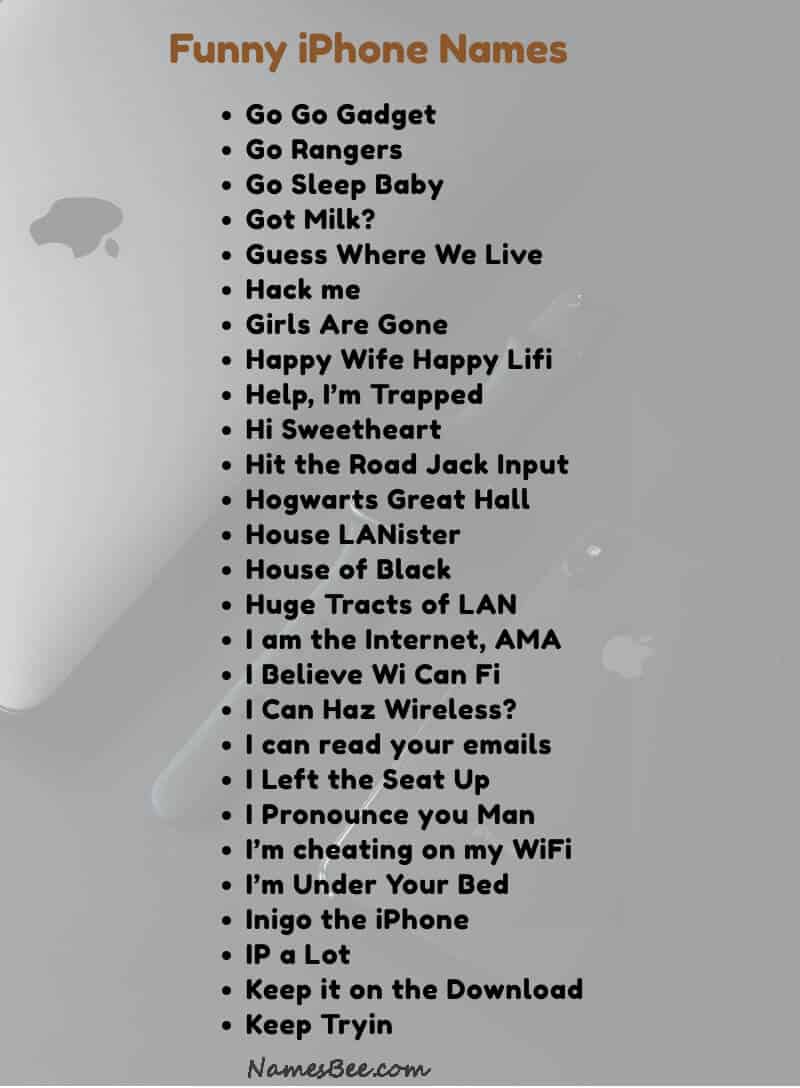
These are the most catchy phone names ever created. Isn’t it so? These lists include the funniest and entertaining words that would serve as your cute iPhone names.
Phone Name Ideas
These are good phone name ideas:
- Lavish Phone
- Precious Pick
- Just Expensive
- It’s a treasure
- Awesome iPhone
- Cloudy
- It’s Steve’s
- iPhone is an iPhone
- High on Price
- Apples are high
- High on iPhone
- Stud-Muffin
- The American Mother
- The Apple of my Eye
- The Apple tale
- The Nipple
- The real iPhone
- The return of iPhone
- Tim’s Winnfield
- Tina Crab Apple
- The Tricolor
- Tiedemann
- Winter stein
- Waken Pippin
- My Kiki
- Fuji my life
- Hey, my doll
- Spark Pug
- Chew Burka
- How’s it going?
- Champagne baby
- Clit Commander
- Electric LETTUCE
- Gimpybutt’s iPad
- iPhone is coming
- Maggot Brain
- Metal gear rex
- Money Sucker
- My iPad Bitch!!
- Pimp Juice’s iPad
- Pocket Pussy
- Polly the Vampire Saviour
- That’s A Very Big iPhone
- The Murder Wizard
- The Pimp Ipizzle
- Too much information
- Vampire-Bella iPod
- Zoltron’s iPad
- Zombie’s iPad
- Annoying Little Bastard
- Battery-Buster
- Girls Are Gone
- Hack Me
- Hep, I’m trapped
- Hit the Road Jack Input
- House Lannister
- House of Black
- IED Booby-Trap
- Mobile Communication
- Mobile Moan
- Net Media
- Ringy-Thingy
- Sheep Shagging Camera
- Street Phone
Funny iPhone Nicknames
These are funny iPhone nicknames:
- America’s Apple
- American iPhone
- Apple Grenade
- Apple of Metal
- My Apple Wand
- Bunch of iPhones
- Captain Apples
- Einstein’s Apple
- Golden Apple
- Golden Boy
- Gravity
- Half-Eaten Apple
- I am Apple
- I have an iPhone
- Iron Apple
- Iron iPhone
- It is a fruit.
- It’s an iPhone
- It’s just an expensive fruit
- Mister and Misses iPhone
- Money spent well.
- My Apple
- Saga of Apple
- Smells like an apple.
- That’s a big appl
- That’s too much.
- Thoughts of apple
- iPhone’s Eyeballs
- Bloody Apple
- Apple Doll
- Apple Nipple
- Get Off My iPhone
- Height of Ego
- iPhone Ego
- iPhone Humming
- Apple Cookies
- Bad Boyiezz
- Fruit Razor
- Metal Wizard
- Swizzle Stick
- Down Throat
- Harry Pothead
- Taylor Swiftstalker
- Enter the Dragon
- Handsome
- Sugar Dimples
- Marshmallow
- Bumblebee
We have tried our best to come up with ideas that would help you choose a good name for your device. Choose the best, choose from these handpicked cool names.
My Phone Name
These are friendly names for your phone:
- That’ expensive
- Expensive iPhone
- iPhone is back.
- Aladdin’s iPhone
- Always an iPhone
- An expensive piece of shit.
- Annoying little Gadget
- Baldwin
- Cripps Pink iPhone
- Genie is finally here
- Glockenspiel
- I am Batman
- I have an apple
- It is Pricy
- It’s a bloody iPhone
- Leathery Coat
- Magical
- Murdered by Money
- New Year, New iPhone
- Siri’s phone
- Stark Industries
- Tydeman
- Don’t Touch My Cell Steve
- Donald’s Chuck
- Hey, Doodle
- Glockenspiel
- H-Apple-Y Ever After
- Have a bite
- Hello Blondie
- Honeycrisp
- I have a Phone
- iPhone wanted
- I-Phone-A
- Lady Alice
- Leather Coat
- McGruff
- Your McIntosh
- Mine-Apple
- Mister Apple
- My Apple Forever
- My Drona
- My Smitten Apple
- My treasure
- One & Only
- Cellphone No.1
- Puritan
- Razor Russet
- Rosebud
- Sherlock Phone
- Side Ch.-Apple
- Hey, Spartan
- Stark’s Earliest
Most of the time, people use the following strategy for naming their phones.
- Use your own personality and names
- You can use light humor words
- Rhyming words are suitable!
- Keep it simple and cool
- Use your skills and common sense
- Create a name after your accessories and tools.
Phone Names Inspired by Hollywood
These are some Hollywood inspired iPhone names.
- Apple “the EyePhone”
- Captain Apple
- Charlie Rose Gold
- Gordon Gekko
- Harry’s Apple Wand
- Jazzy Fruit
- Ninotchka
- Rambo
- Shredder
- The Apple Fever
- The Terminator
- Thor
- Tony Montana
- Apple Pimp
- Bruce Wayne
- Expensive-Einstien
- Finally an iPhone
- Honeycrisp
- I am Rich
- I got the iPhone
- Iron Man
- It’s a Bomb
- Just a box of apple
- Just a pretty face.
- Mcintosh
- Puritan
- Rambo
- Regretted it.
- Showoff
- Shredder
- Terminator
- Thor’s Apple
- Winterstein
Funny Airdrop Names
These are some cool and funny airdrop names you will like:
- It’s Me Loading
- Searching? Not Found.
- Keep Distance Please
- 1 Airdrop 2 Girls
- 100 Times Denied
- 301 Redirected
- Connected To CBI
- It Hurts Connecting…
- Loading… Airdrop
- Own Damn! Airdrop
- Password Is Smile
- Airdrop Is Now Wired
- Connect Please…
- Girl Next Door
- Airdrop For Sale
- Airdrop Likes You!
- Airdrop Uncensored
- Come To My Bedroom
- Connect To Life
- Drop it Like Airdrop
- Feeling You’re Nearby
- Get My Beer!
- I’m Behind Curtains
- Incoming Viruses
- Landing On Airdrop
- NASA Connecting…
- Not Airdrop Accessed
- Please Proceed…
- Airdrop Saved You!
- Airdrop Needed
- Under Surveillance
- Wanted IQ Level
- Airdrop Humming
- Airdrop Not Wifi
- Good Mood Connecting…
- You’re In My Brain
- On A Skyscraper
- I Am Pregnant
- I Love Nutella
- Airdrop Problems
- Airdrop! Any Problem?
- Wait! Until I Airdrop
- Airdrop For Free
- Airdrop Your Soul
- Please! Airdrop Me
- Airdrop! Nothing Hard
- Airdrop On Board!
Cell Phone Names
Here are some cool and creative cell phone names:
- A gadget with the letter I
- A little too much
- Apple Device
- Better have some money
- Bought a fruit
- Bought a Mansion
- CEO of Expensive
- Digital Apple
- Don’t touch it
- Done with cheap.
- Expensive Element
- Expensive than your ego
- Extra-Costly
- Fruit Bucket
- Fruit that starts with I
- Go get an iPhone
- High on Cost
- I look rich now
- It’s a Pinata
- It’s not cheap
- It’s only expensive
- King T’Challa
- Money’s all gone
- Not a Samsung
- Over the Odds
- Paid for a talking fruit
- Siri is expensive
- Sweet and Fruity
- Talking Apple
- This fruit is expensive
- Too expensive for you
- Too good for you
- Trillionaire
- Valuable Apple
- Vibranium
- You must be rich.
How to Create Phone Names?
If you are looking forward to starting your own business, it is important to create a great brand name. This is one of the most important aspects of getting noticed— after all, your business name is inside your brand, products, and logo, and therefore it can have a huge impact on your sales rank.
Let’s give you the some of the best ideas for naming your phone.
Try to Be Relevant to your niche.
The best way to be relevant to your niche is to start with the niche’s demographic information. What are the professions or interests of the people that are a part of the niche? What are the interests that these people have? You need to cordon off your information to topics that apply to your niche. This will help you with online marketing because you will be offering products that are relevant.
Know Your Competitors
The most powerful way to increase market share is by learning from competitors how to do the right marketing. Put your competitors experiences to good use by learning from their best and worst planning in their niche.
There are plenty of tools to spy on your competitors.
Make A Brand Tagline
A brand tagline is a slogan that describes your business. It should perfectly describe what your brand or company does. Your tagline is your introduction; it must get your potential clients interested in you and determine if they want to read more about you.
What’s your tagline? Make one of the best tags for your phone names. Such as, “The perfect phone” or “Classic phone”
Choose Short, Simple, And Attractive Names
Short, simple, and memorable names are great for phone names. I usually go for the simplest names, the one that pops into my head when I first think of it. I am not one of those people that keeps going over and over the options.
Easy to pronounce names are remembered while hard to spell words are hated. Go with rhymes.
Keep the SEO Factor in Mind.
Good local SEO is very important for businesses that rely on people finding their products and services in the area. Good US-based local SEO includes sales, overall ranking of sites, and site maintenance to ensure good Google results in the SERPs for location and specific names of locations where you offer products or services.
Lean how to target your local clients with local SEO. You need to be optimized for a certain location if you are operating in a town or city.
Get the Right Domain Name
It’s always important to get the right domain name for your company, but it’s even more important now than ever. A well-chosen domain name can help you stand apart from the crowd and establish a stronger online presence.
You will need a good domain name and online presence with a good portfolio to attract people. Get a branded domain name to get potential customers and grow your business online.
Try Phone Names Generator
Our business name generator is a great tool for those that are thinking what to call their new phone. The generator is straightforward—you simply enter the product category you want names for; the generator will provide you with 10 random brand names.
It’s quick and easy to change your device’s name. First, swipe down from the top of the screen (once or twice depending on your phone or tablet’s manufacturer) to open the notification shade, then tap the gear icon to open the Settings menu. (howtogeek)
Afrikaans = Selfoon
Albanian = telefoni celular
American = cell phone
Australian = mobile phone
Arabic =’Hatif Mahmul’ but people on the street may call it a
‘Neqal’, a ‘Khelwi’, a ‘Jewaal’, or use ‘Mobile’ or ‘Portable’ from
English and French.
Armenian = Բջջային հեռախոս
Dutch = mobiele telefoon
Farsi = Telephone or mobile which is taken fron English
language.
German = ‘Handy’
Greek = Κινητό τηλέφωνο (pronounced kineto telefono)
French = ‘Portable’
Hungarian = Mobiltelefon
Indonesian = telepon genggam
Irish = Fón Póca
Hebrew =’Telefon Selulari’ but most people call it a ‘Pelefon’
after the in-country famous telephone brand. (It’s similar to how
Americans call a tissue a «Kleenex».)
Polish = telefon Komórkowy
Portuguese = telefone celular
Spanish = Movil’ in Spain and a ‘Celular’ or ‘Cel’ in Latin
America.
Swedish = Mobiltelefoni
Tagalog = teleponong selular
Thai = Meu teu (hand carry) มือถือ
Turkish = Cep telefonu
Vietnamese = Điện thoại di động
Yiddish = Most Yiddish speaking Jews say Cellphone (spelled
סעלפאָון). European Jews also use the word from the language of
their country.
Zulu = Umakhalekhukhwini

